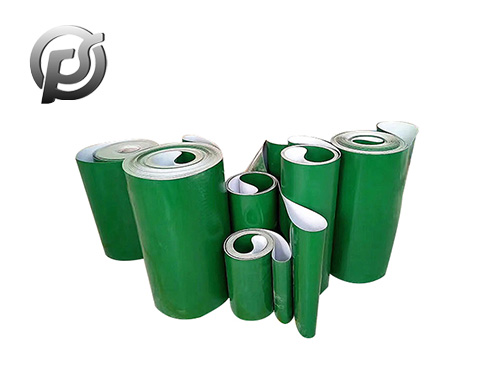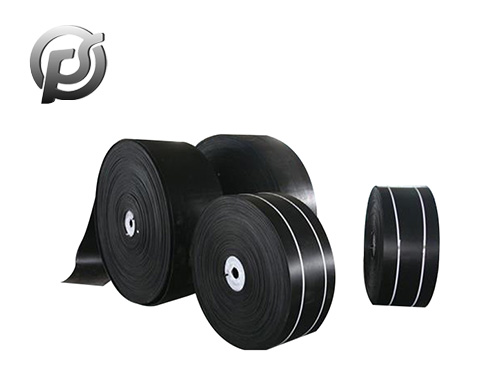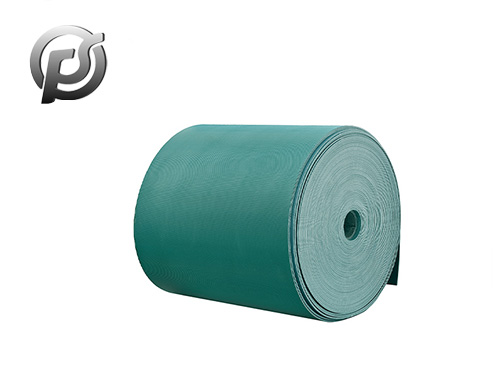Large dip Angle belt machine coating requirements for anti-corrosion coating suitable for cold climate environment, winter should meet the requirements of cold and anti-freezing.
1. Surface treatment requirements
1) The surface of the steel structure of the belt conveyor shall be sandblasted to meet the national standard Sa2.5 level, remove dust, remove oil stains with cleaning agent, keep the bottom surface clean and dry, and then spray anti-rust paint. (The abrasive used is dry quartz sand with a particle size of 0.3 ~ 1.5mm).
2) Welding slag, powder coating, arc dust, residual edge and burr from mechanical processing are not allowed on the surface of welded structural parts.
3) Casting, forging surface uneven or other surface concealer caused by sandblasting to try to smooth, fill or appropriate treatment.
4) The surface of the coating to be recoated should be kept clean, dry and free of any dirt.
5) Where the processing or welding primer is damaged, it should be repainted after the primer, and then the matching medium coat or top coat.
2. Large dip Angle belt machine anticorrosive coating requirements
1.1 Paint film thickness:
Primer: epoxy zinc-rich primer, airless spray, 50μm, recoating interval 2h;
Medium coating: epoxy cloud iron antirust paint, airless spray, 100μm, recoating interval of 10h;
Top coat: acrylic rubber top coat, airless spray, 50μm, recoating interval 4h.
1.2 Requirements:
1) The interval between the metal surface after rust removal and the primer is generally no more than 6h. If rust has been rusted before painting, it should be cleaned or cleaned again.
2) Local airless spraying can not be used, brush coating can be used, brush coating (can be multiple times) film thickness must reach the specified film thickness.
3: corrosion prevention standards
1) The anticorrosion grade of the anticorrosion system shall be above medium, and the thickness of the dry film of the coating shall reach the thickness specified in this Agreement.
2) Preservative life: 5 ~ 8 years.
4: Acceptance standard
1) After surface treatment, the steel surface is almost white, no visible grease, dirt, oxide skin, rust and other sundries.
2) After coating epoxy zinc-rich primer, the standard film thickness is 50μm, the film adhesion is good, no leakage coating, pinhole, bubble, crack, fall off, flow hanging and other defects, the surface is kept dry and clean.
3) After coating the epoxy cloud iron anti-rust paint, the standard film thickness is 100μm, the adhesion between the coatings is good, no leakage coating, pinhole, bubble, crack, fall off, flow hanging and other defects, the surface is kept dry and clean.
4) After coating acrylic top paint, reach the standard film thickness: indoor 100μm, outdoor 200μm, good adhesion between coatings, no color infiltration phenomenon, no bubbles on the surface, flow hanging and other defects, the surface has a certain luster.
5. Detection method
1) Testing instrument: electromagnetic dry film thickness measuring instrument.
2) Detection method: The electromagnetic dry film thickness measuring instrument is used to measure one point every 10m2 and one point every 3 ~ 4m of thin bodies such as pipes. The three-point average is the actual film thickness of the coating, and the three-point error should be less than 20% of the specified standard film thickness.
3) Appearance detection: the appearance of the coating can be observed with the naked eye or a five-fold magnifying glass.
4) The film thickness mentioned above is dry film thickness.
 Optimizing Operations with PE Conveyor Belts: Durability, Efficiency, and Versatility
Optimizing Operations with PE Conveyor Belts: Durability, Efficiency, and Versatility
 Exploring the Efficiency and Versatility of Light Conveyor Belts
Exploring the Efficiency and Versatility of Light Conveyor Belts
 Polyester Conveyor Belts: Enhancing Efficiency and Reliability in Material Handling
Polyester Conveyor Belts: Enhancing Efficiency and Reliability in Material Handling